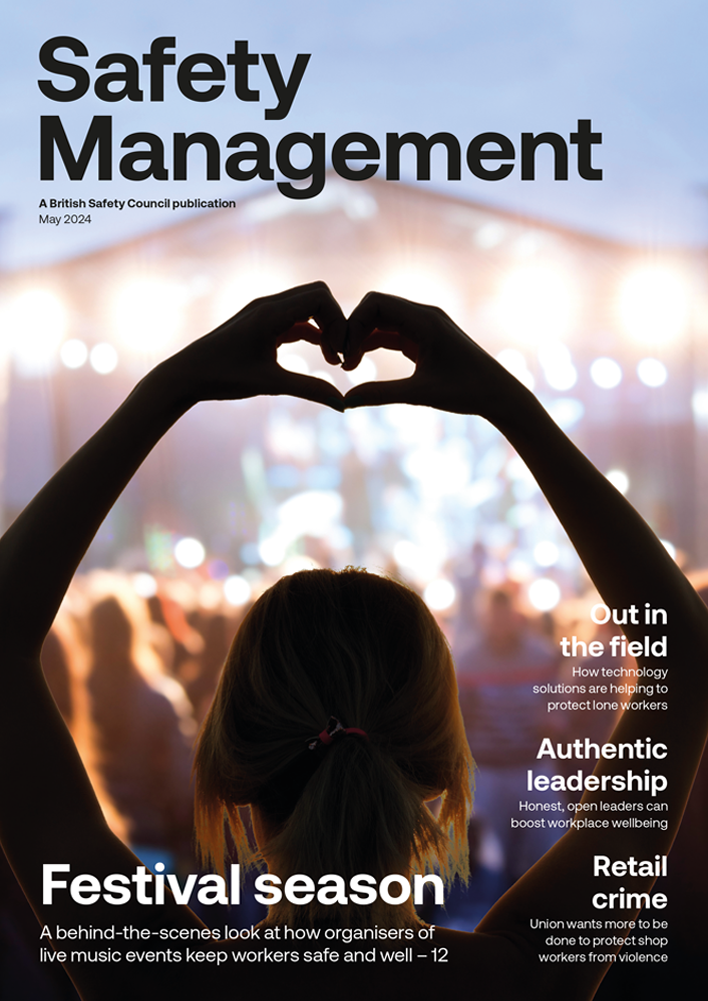Although UK employers have long had a duty to prevent their employees suffering noise-induced hearing loss, a huge swath of workers continue to be exposed to loud noise at work, due to a combination of cultural, technological and regulatory failures.
Opinion
Why the UK’s noise regulations fall short in protecting workers’ hearing
Almost two million Britons already have hearing loss as a result of uncontrolled workplace noise.
Another two million are at risk of joining them. There is an epidemic of occupational noise-induced hearing loss in the UK – the result of long-standing cultural, technological and regulatory failures.
Noise-induced hearing loss isolates sufferers, cutting them off from others, forcing them out of the workforce and sending them spiralling into cognitive decline – eroding and impoverishing our communities in the process. The fight against occupational deafness is also the fight against loneliness, isolation and social breakdown.
The UK government must act now to preserve the hearing of British workers exposed to harmful levels of noise. The first step that must be taken is the reform of the RIDDOR (Reporting of Injuries, Diseases and Dangerous Occurrences Regulations) 2013 reporting regime. Only if employers have to report to the enforcing authorities that they have caused a worker to go deaf will they start taking the issue of uncontrolled workplace noise seriously – and start implementing the provisions of The Control of Noise at Work Regulations 2005.

Dr David Greenberg, Founder and director, Eave
Introduction
As the UK looks to build back better from the coronavirus pandemic, there is a serious hidden issue within our workplaces that threatens that recovery. More than 2.3 million Britons currently work in harmful levels of noise – across industries as diverse as construction, nightlife, manufacturing and the military. These individuals are at very great risk of joining the 12 million UK adults already suffering from irreversible hearing loss.
Noise-induced hearing loss has wide-ranging and far-reaching consequences for sufferers. People
with hearing loss are more likely to be unemployed than their compatriots, are more likely to be forced into early retirement, earn an average of £2,000 less per year than members of the general population and are also less likely to be in a relationship.
Worse still, noise-induced hearing loss takes a terrible (and under-reported) toll on the health of sufferers. Hearing loss is the leading underlying cause of tinnitus – a condition linked with depression and an increased risk of suicide. And we now know that acquiring just mild hearing loss is enough to double your risk of getting dementia. Individuals with severe hearing loss are five times as likely to develop dementia.
Exposure to hazardous noise doesn’t just cause hearing loss with all its frustrations and comorbidities – it also puts workers at greater risk of suffering from strokes and heart attacks. The stress hormones generated by high levels of noise have been shown to negatively affect sleep, learning, memory, motivation, as well as the problem-solving aptitude of sufferers.
Taken together, the consequences of exposure to hazardous noise are devastating for individuals – but they are also destructive for society at large. Noise-induced hearing loss isolates sufferers, cutting them off from others, forcing them out of the workforce and sending them spiralling into cognitive decline – eroding and impoverishing our communities in the process. That is why the fight against occupational deafness is also the fight against loneliness, isolation and social breakdown.
How widespread is occupational noise-induced hearing loss?
Noise-induced hearing loss is the most common preventable occupational health condition in the world, and the most commonly reported occupational disease in Europe. According to the World Health Organization, workplace noise accounts for 22 per cent of the occupational burden of disease in Europe – more than any other disease, including carcinogens and airborne particulate matter.
While the UK may have left the EU, it continues to suffer from the consequences of uncontrolled workplace noise along with the rest of the continent. Academic research suggests that nearly two million of the 12 million UK adults suffering from hearing loss are likely to have had their hearing impaired because of exposure to harmful noise at work.
In several critical national industries the problem is particularly acute. Academic surveys suggest that one in four noise-exposed construction workers have a material hearing impairment, and seven per cent of all construction workers have tinnitus. In the manufacturing sector, one in five noise-exposed workers have a material hearing impairment, and more than one in 10 have tinnitus. US studies suggest that 90 per cent of miners have a hearing impairment by the time they reach the age of 50.
Meanwhile, British military veterans under the age of 75 are three-and-a-half times more likely to report difficulty hearing than the general population. A 2014 report by the Royal British Legion estimated that 300,000 ex-service personnel were living with occupational hearing loss at the time the report was compiled.
From 2000 to 2016, UK employers were forced to settle more than 150,000 insurance claims made by employees whose hearing had been permanently damaged at work.
Why does the UK have such a big problem with occupational hearing loss?
I believe that the epidemic of occupational noise-induced hearing loss currently afflicting the UK has its roots in longstanding cultural, technological and regulatory failures.
Cultural failures
Despite the fact that one in five UK adults already have hearing loss – and even though hearing loss has such serious consequences for sufferers’ health, wellbeing and prospects – our society has not developed a noise control and disease prevention culture. In fact, time and again on television, in the cinema, and in books, hearing loss is portrayed as a comic disability.
In addition, to quote the American Centers for Disease Control and Prevention (CDC): “Efforts to prevent occupational hearing loss have been hindered because the problem is insidious and occurs without pain or obvious physical abnormalities in affected workers.” It can take years for the effects of hazardous noise to manifest and there is very little public awareness of the health risks – like dementia – associated with hearing loss.
Occupational hearing loss is perennially just off the top of the health and safety agenda – a problem exacerbated by the rise of more attention-grabbing diseases like asbestosis, hand-arm vibration syndrome and Covid-19.
Technological failures (issues with protective equipment)
UK law obliges employers to give their employees hearing protectors if they are likely to be exposed to daily or weekly average noise levels of 80dB(A) or more. Inevitably, employers looking to fulfil this requirement give their workers either foam earplugs or passive ear defenders (also known as earmuffs). These technologies have been in widespread use in UK industry for decades and have comprehensively failed to prevent the spread of noise-induced hearing loss within the nation’s workforce.
Time and again it has been shown that the effectiveness of foam earplugs is likely to be compromised by the fit, fitting skill and motivation of the wearer. When HSE itself conducted a wide-ranging investigation into the real world use and performance of earplugs its researchers observed, “most workers using foam earplugs fitted them incorrectly”.
While earmuffs (also known as ear defenders) are more consistently effective, they are often shunned by workers because they dramatically reduce the wearer’s situational awareness, and increase the chance that the wearer will be caught up in an accident at work. In 2020, four of the five main causes of fatal workplace accidents were linked to a lack of situational awareness, so it is completely understandable that workers up and down the country consistently reject directives to wear protective equipment (like passive ear defenders) which make it harder for them to know what’s going on around them.
Crucially, neither traditional earplugs nor earmuffs incorporate technology which would allow businesses to track (and thereby improve) wear rates. As a result, year-after-year, all over the UK, wear rates remain dangerously low. Academic research suggests that, on average, one in three workers exposed to noise in industries as diverse as construction, manufacturing, mining, transportation and agriculture fail to wear hearing protection. However, proprietary data gathered by members of the Hear Today, Gone Tomorrow coalition suggests that the situation in some industries may be much worse than this. For example, in the UK construction industry, workers are likely only wearing hearing protection for 20 per cent of the time they spend in hazardous noise.
After decades of failure, it is clear that only protective equipment which (a) preserves the situational awareness of the wearer and (b) allows businesses to actively monitor wear rates and the wearer’s exposure to noise constitutes true hearing protection (and has the potential to end the epidemic of occupational noise-induced hearing loss in the UK).
HSE data on the number of British workers exposed to noise suggested that UK employers needed to collectively provide a total of 3.7 billion hours of true hearing protection (THP) to their staff in 2021. We, however, estimate that in 2021, UK workers only benefited from approximately 63,000 hours of THP (0.17 per cent of what was required).
Regulatory failures
In April 2006, The Control of Noise at Work Regulations 2005 came into force. The 2005 regulations replaced legislation dating back to 1989 and went further in building on the important Health and Safety at Work Act of 1974. On paper, the 2005 regulations were a big step forward for the management of noise in UK workplaces – they established the noise levels at which employers had to take action, set limits for worker noise exposure, obliged employers to create hearing protection zones, required the provision of information and training to workers – and much more besides.
On the other hand, the regulations also have notable weaknesses: for example, they require employers to assess the effectiveness of their noise control programmes using health surveillance. But health surveillance doesn’t prevent workers from going deaf due to hazardous noise – by the time surveillance highlights a problem with noise control measures, workers have already gone deaf.
Overall, The Control of Noise at Work Regulations 2005 were generally well-considered and well-structured – but they have not succeeded in ending the epidemic of occupational noise-induced hearing loss in the UK in the 17 years since they came into effect. The reason for this is quite simple: the regulations have barely been enforced. At the time of writing the majority of noisy UK businesses do not comply fully with the 2005 regulations and there seems to be very little impetus amongst politicians to change the status quo.
Another regulatory failure behind the epidemic of occupational noise-induced hearing loss in the UK relates to the RIDDOR reporting regulations. Even though noise-induced hearing loss is the most common preventable occupational health condition in the world, and the most commonly reported occupational disease in Europe, it is not one of the six occupational diseases reportable under RIDDOR legislation. This is a shocking state of affairs - and one that I personally seek to change. In short, we must ensure employers are required to report when a worker suffers noise-induced hearing loss – only then will they take the issue seriously.
Right across the country, we must ensure our workforce is properly protected. To build back better, we must build back safer.
In conclusion
It is time for action. The epidemic of occupational noise-induced hearing loss in the UK cannot be allowed to continue. We must prioritise the hearing health of our workforce and take concrete steps to prevent further harm. The government must act now to reform the RIDDOR reporting regime, making noise-induced hearing loss reportable and holding employers accountable for the harm they cause.
We must also prioritise the development and implementation of true hearing protection technology that preserves situational awareness and actively monitors wear rates. We cannot afford to let this issue slip off the health and safety agenda any longer. Let us fight against occupational deafness and the social isolation and cognitive decline that come with it. Join us in calling for change and a better, safer future for workers in the UK.
Dr David Greenberg is the founder and director of EAVE. For more information, or to contact EAVE, see:
T. +44 7952 925540
OPINION

Lone worker monitoring technology: is it for safety or surveillance?
By Hayden Singh, Pinsent Masons on 03 May 2024
As businesses make increasing use of safety monitoring to minimise the risks associated with lone working, consideration must be given to the impact on workers. Concerns that safety monitoring measures will be used for performance management purposes may well increase rather than alleviate health and safety risks.

Why our world needs safety more than ever
By Mike Robinson FCA, British Safety Council on 30 April 2024
Our safety, in every sense of the word, is very much in the news right now. Whether it’s wars in Europe or the Middle East, threats from terrorism or rogue states, the need to keep children safe online, or violence faced by shop keepers, the numbers and level of threats to our safety seem to rise exponentially every day.

Violence against shop workers grows in an epidemic of retail crime
By Paddy Lillis, Usdaw on 26 April 2024
Violence against shop workers has more than doubled in a year, according to Usdaw’s latest annual survey, as official figures show that shoplifting has risen by over a third. Shoplifting is not a victimless crime; theft from shops has long been a major flashpoint for violence and abuse against shop workers.



